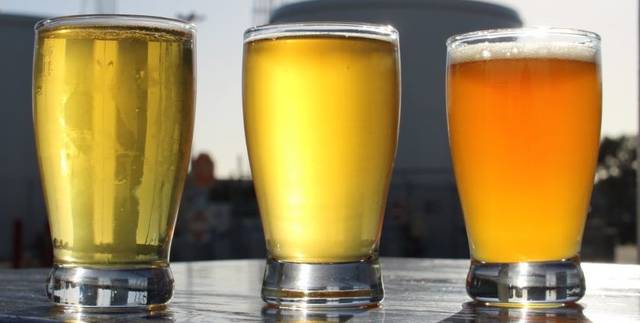Beer styles are seemingly endless in the craft beer market. While there is a set range of beer styles, within those styles is a vast amount of variations. Some of these variations are easy to distinguish from one another, such a stout with coffee versus the same stout with vanilla instead. But one area the market is heading into more often is unfiltered territory.
The unfiltered notion in the craft beer market has been somewhat standard for some styles, but others have been making a more definite appearance as of late. With many more macro-beer drinkers getting into craft, the concept of an unfiltered beer may be a bit confusing.
First, a discussion of filtered beer is in order. Filtering a beer removes much of the yeast and sediment that can occur during the brewing process. The yeast and sediment — made up of hops, malt and other ingredients — add flavor to the beer, but many beer drinkers prefer to not see them in their finished beer. The majority of beer sold in America is filtered, and there are a variety of reasons for this to take place.
Filtering makes the beer brighter in color and more clear. This is how many beer drinkers view the quality of a good beer. The other major reason that breweries filter their beer is product uniformity. Many macro breweries have facilities throughout the country, and variations can occur. Breweries do not want one facility to produce a beer that is drastically different than the beer of another.
One way to view macro beer is like fast food. Any fast food chain wants uniformity for all of its locations. This way, a customer in Mississippi knows he can get the same quality food, and I use that term lightly, when on vacation in Maine or Montana. This fact ensures a loyal customer regardless of location or if the individual moves across the country — something local craft breweries do not have as an advantage.
Filtering the beer also removes the hop particles, which lowers bitterness, a quality macro breweries want as a their beer. Although the beer is losing its flavor, the result is a nationally uniform beer. However, it should be noted that filtering a beer does impart great head retention in the product for those beautiful beer photos!
An unfiltered beer has a strong punch of flavor and is beloved by craft beer drinkers. The yeast can be left in the beer, and, in some cases, more is added at bottling for a “bottle conditioned” beer. An unfiltered beer may not be how you are picturing it, though.
Some may think of an unfiltered beer as looking murky or muddy and too thick to see through. While this is sometimes the case with the new craze of New England IPAs, it is not necessarily true. Many unfiltered beers possess a slight amount of haze, which may not even be noticeable to the undiscerning beer drinker.
The flavor impact is strong, yet is also subtle in many unfiltered beers. The thought of hop particles floating in a beer may conjure images of extreme bitterness, and sometimes this can be true depending on the brewer’s intention. Often, it is not the case.
Many unfiltered IPAs actually have a less sharp bitterness quality, and instead, the hop profile is “smooth” or “round” as many would say in the beer judging world. This creates an IPA that is often more approachable than the filtered brethren.
A great way to try this is by getting an unfiltered version of a favorite IPA such as Ballast Point Sculpin and Unfiltered Sculpin. The strong hop punch of standard Sculpin is replaced with a smooth hop flavor profile in Unfiltered Sculpin. It is the same beer, just not filtered before bottling.
Whether you like your beer as hazy as orange juice or clear and beer colored, there is no shortage of great beer. The filtering process is just one of many tools at the disposal of great brewmasters throughout this country.





